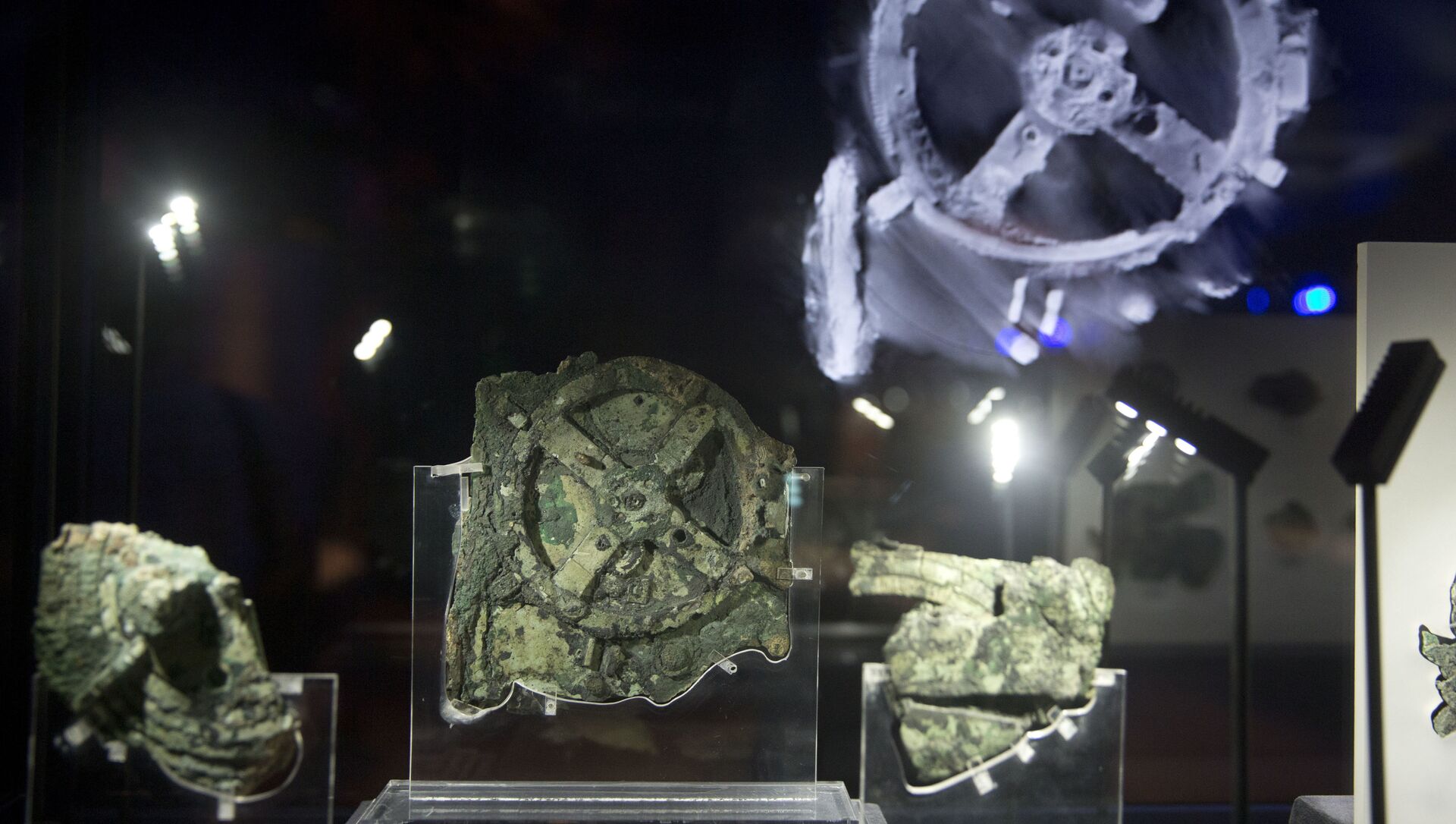Researchers at the University College London (UCL) have solved a "major piece of the puzzle" associated with an ancient Greek hand-powered contraption known as the Antikythera device, according to a statement posted on the university’s website.
The device, recovered in 1901 from a Roman-era shipwreck in the vicinity of the island of Antikythera in the Mediterranean, and often referred to as the world’s first analogue computer, was used to predict various astronomical events, such as eclipses, phases of the moon, and positions of planets.
"Ours is the first model that conforms to all the physical evidence and matches the descriptions in the scientific inscriptions engraved on the Mechanism itself," lead author of the study Professor Tony Freeth from UCL said. "The Sun, Moon and planets are displayed in an impressive tour de force of ancient Greek brilliance."
Efforts to gain an understanding of the intricate gearing system at the front of the device were apparently hampered by the fact that only a third of the contraption survived to this day.
The device itself is split into 82 fragments, with the biggest one, Fragment A, displaying "features of bearings, pillars and a block," while another, Fragment D, features "an unexplained disk, 63-tooth gear and plate."
Using an "ancient Greek mathematical method described by the philosopher Parmenides," the team established how the device’s creators were able to derive the accurate 462-year cycle for Venus and 442-year cycle of Saturn – as the numbers representing those cycles were previously found on the front cover – but also "managed to recover the cycles of all the other planets, where the evidence was missing."
"After considerable struggle, we managed to match the evidence in Fragments A and D to a mechanism for Venus, which exactly models its 462-year planetary period relation, with the 63-tooth gear playing a crucial role," team member and PhD candidate Dave Higgon remarked.
Professor Freeth also explained how the researchers "created innovative mechanisms for all of the planets that would calculate the new advanced astronomical cycles and minimise the number of gears in the whole system, so that they would fit into the tight spaces available."
"This is a key theoretical advance on how the Cosmos was constructed in the Mechanism," said Dr Adam Wojcik (UCL Mechanical Engineering), co-author of the study. "Now we must prove its feasibility by making it with ancient techniques. A particular challenge will be the system of nested tubes that carried the astronomical outputs."

